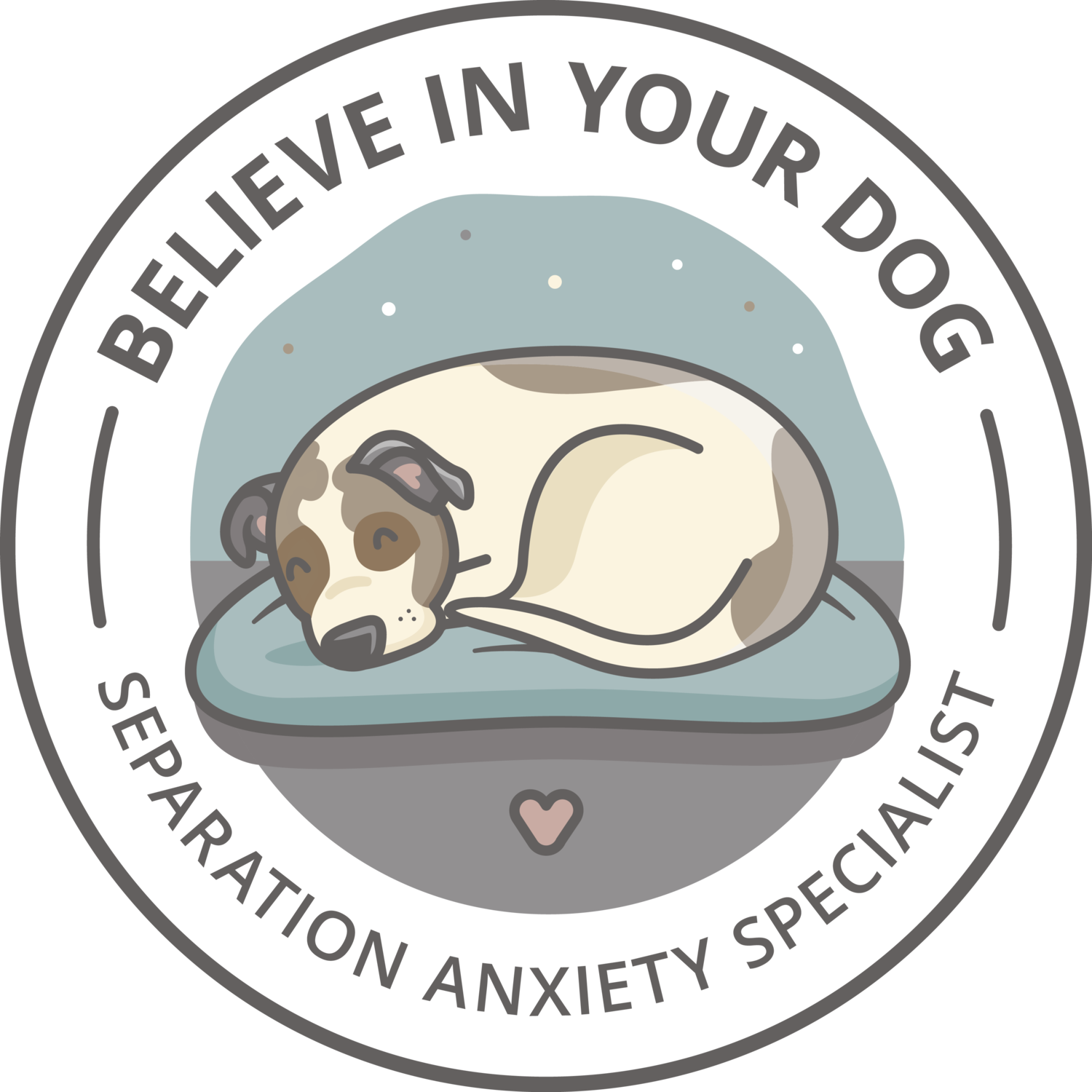Simple but Not Easy: The 3-Step Process to Resolve Separation Anxiety
There are only 3 steps in the separation anxiety protocol that has helped hundreds of owners overcome alone-time struggles with their dogs. You heard me right – 3 steps. Sounds pretty simple, right? And the truth is, it is quite simple. But it’s not easy.
Complex Simplicity
Then why is separation anxiety believed to be one of the hardest behavior problems to overcome? Why do professional dog trainers (even those trainers who happily help dogs that bite strangers or growl at other dogs) refuse to take on separation anxiety cases? Why do owners often go through multiple trainers without making any progress toward resolving their dog’s alone-time distress? Why does it seem so complicated?
Because separation anxiety training is simple, but not easy. It is a bona fide panic disorder. A dog suffering from this behavior challenge isn’t being naughty or indignant; he is crippled with anxiety. And as is usually the case with all forms of anxiety, recovery is rarely linear. There are almost always ups and downs. Dogs often have periods of improvement with each training session, fostering a sense of hope and pride in their owners. And then they invariably have a setback, sending owners into a sea of disappointment and overwhelm.
Variables At Play
Why does this happen? The answer is as complex as you’d expect. There are a multitude of variables at play for every home, every family, every dog. Your dog’s anxiety might be significantly affected by the time of day, for example. While he may have been sailing through training sessions at your lunch break, he might struggle during your first evening absence.
When working with my clients, I have discovered countless other unforeseen variables that can affect their dogs’ progress. Everything from what clothes the owner was wearing that day and which family member did the leaving to how much exercise and enrichment the dog had received have made a big impact on how the dog handles an absence. Sometimes even the weather can make a difference!
And to make matters more convoluted, we have to first establish that the dog would even benefit from the protocol. If a dog is barking when left alone because he’s unsure about noises he’s hearing outside, for example, he may not be a candidate for an alone-time protocol. Likewise for dogs who are simply “partying” when the owner is gone. They aren’t upset about being alone, so a long and intensive protocol aimed at teaching them that alone-time is safe isn’t the antidote. If you aren’t sure, a qualified separation anxiety trainer can help you decipher.
The 3-Step Process
So here it is: the 3-step process I use with all my clients to get their dogs over their fear of being left alone. I’d be remiss not to mention that I don’t recommend doing this without first getting expert support or at least arming yourself with factual information to help guide you.
Suspend Absences. The first order of business is to stop leaving your dog alone. I know it may seem impossible, but I promise you it isn’t. Together, my clients and I figure out creative ways to suspend absences so that their dogs no longer have to experience that feeling of panic again. Only then can dogs learn that being left alone is safe, because they’re only experiencing periods of isolation that they can handle comfortably.
Start Small. What version of being left alone can your dog handle right now? Strip the absence down to its least frightening approximation. Perhaps you need to ditch the shoes, keys, purse, etc. and gauge your dog’s response to door interactions (walking toward the door/jiggling doorknob/opening and closing door.) Some clients may be able to start with a few seconds or minutes of duration. Find your individual dog’s baseline and start there.
Go at Your Dog’s Pace. Your dog didn’t learn that being left alone is traumatizing overnight so he won’t learn that it’s cool that quickly either. Expect the process to be slow and for there to be bumps in the road. Build up your absences gradually. This is a simple concept but again, not easy to execute appropriately and efficiently. If you push your dog over threshold, your progress will be slowed.
Final Thoughts
There is no magic in separation anxiety training. There is, however, a tried and true treatment protocol based in the science of animal learning that will teach your dog that being alone is safe. And we’d serve our dogs to simply accept this and start planning how to make it happen.



